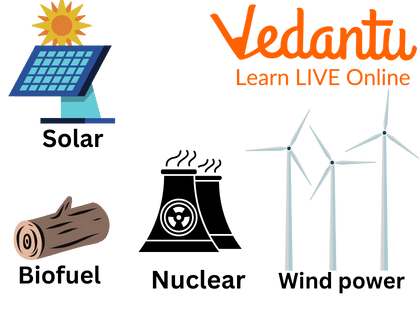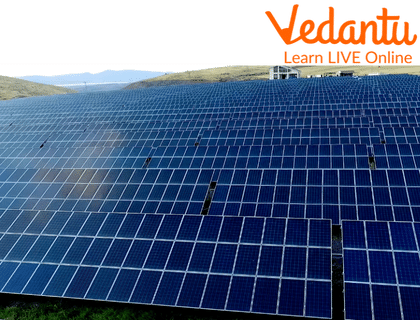




What are Resources?
Resources are anything that has utility and adds value to your life. Air, water, food, plants, animals, minerals, metals, and everything else that exists in nature and is useful to mankind is a 'resource'. The value of each such resource depends on its usefulness and other factors. For example, the metals gold, silver, copper, or bronze have economic value; That is, they can be replaced with money. However, mountains, rivers, seas, or forests are also resources that do not have economic value.
Anything and everything that is naturally available on the earth is a natural resource. We can further divide them into:
Renewable resources are almost all elements of nature that can renew themselves. For example, sunlight, wind, water, forest, and so on. Whereas non-renewable resources are limited in their quantity. Like fossil fuels and minerals. Although these resources take millions of years to form, they will be exhausted in our lifetime if we use them continuously.

Sources of Renewable Energy
What are Renewable Resources?
Renewable resources are those resources that can be naturally regenerated or renewed over time. Water, wind, solar energy, etc. are all renewable resources. An environment can effortlessly renew these resources. Some renewable resources have an essentially endless supply, such as solar power, wind power, and geothermal pressure. In contrast, other resources are considered renewable even if some time or effort is put into their renewal (eg, wood, oxygen, leather, and fish) can go with time.
Five Important Renewable Resources
Uses of Renewable Resources: There are many renewable energy sources and their uses. But the most common are:
1. Solar Energy (Energy from Sun)- According to the National Renewable Energy Laboratory, "the amount of energy that falls to Earth in one hour from the Sun is not used by everyone in the world in a year." Today, we use the sun's rays in many ways.

Solar Energy
2. Wind Energy - A windmill is usually attached to a generator that is powered by its rotation. Wind power is not only used to produce electricity but to perform repetitive mechanical tasks, such as pumping water from wells or grinding grain.

Wind Energy: Wind Turbines.
3. Hydro Energy - Hydropower is one of the most commercially developed energy sources. This renewable energy source generates electricity by using a dam or barrier to control the flow of water.
4. Geothermal Energy - By harnessing the natural heat beneath the Earth's surface, geothermal energy can be used directly in homes or to generate electricity.
5. Tidal Energy - It is another form of hydroelectricity that uses tidal currents to drive turbine generators.
Why is Renewable Energy Important for Sustainable Development?
Sustainable development means fulfilling the needs of the present without compromising the needs of future generations.
Renewable energy sources play an important role in achieving sustainable energy with low emissions. It is already recognised that renewable energy technologies can substantially cover electricity demand and reduce emissions. In recent years, the country has developed a sustainable route for its energy supply.
Uses of Alternative Sources of Energy
Bio Energy: We generate bioenergy from organic matter known as biomass or biofuel. Some examples would be wood and the byproducts of a recently living animal or plant. Ethanol is an example of a biofuel that many people are familiar with.
Nuclear Power: Nuclear energy is created through heat through the fission process of atoms. The initial fission process produces energy and triggers a chain reaction that repeats the process and produces more energy. In nuclear power plants, the heat generated by fission produces steam. The steam then spins a turbine, which produces electricity.
Wave Energy: Wave energy is an alternative energy source from waves travelling across the water. Wave energy uses power generators placed on the surface of the ocean. Wave energy is eco-friendly, renewable, and harmless to the environment.
What Will Happen If We Keep Using Non-renewable Resources?
Most of the world relies on non-renewable resources such as coal and oil that are used for domestic and industrial purposes. If we keep using them recklessly, there will be a time when no more resources will be left for future consumption. Developing technologies that efficiently use renewable energy sources is also critical to our future.
Solved Questions
Write True or False.
1. Wood is not a renewable resource. - False.
2. Methane is a composition of biogas. - True.
3. Renewable energy does not cause pollution. - True.
4. Transportation of renewable energy is difficult - True.
5. Renewable energy causes an ecological imbalance - False.
Learning by Doing
Kids Activity: List as many items from renewable natural resources as you can.
Hint: Go for a short walk outside, consider taking a walk around the neighbourhood or even a trip to your backyard. (This will help you to make a list of many more items.)
Summary
We have already studied many things related to "resources". As we know, renewable resources are very important to maintain the dynamics of the universe. So we have to update technology and make sure that there will be no more waste of resources. We should take proper care of our environment without damaging natural resources. We should use renewable resources effectively and efficiently by upgrading our technology.
FAQs on Uses of Renewable Resources
1. Name the energy source that provides energy in dilute form.
Renewable energy sources are not constantly available because they are usually variable and dilute. A large land area is required to concentrate the energy because the efficiency of converting these energy sources is low.
2. What effect is responsible for converting light energy into electrical energy in a Solar cell?
When a photovoltaic cell is exposed to sunlight, a photovoltaic effect occurs that generates a voltage or electric current by converting light energy into electrical energy.
3. Explain the main drawback of renewable energy?
Renewable energy often depends on the weather for its sources of electricity. As such, rain is needed to fill the dams with hydro generators, and, thus, provide electricity. The wind is needed to turn the blades of a wind turbine.









